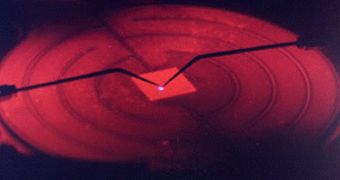When it comes to computer chips, few things are more damaging than excessive heat, and cooling solutions that attempt to bring the temperatures down at low or at least manageable levels are now having an industry of their own. What if a computer chip could run at temperatures so high that would normally fry any other hardware components? That would be sweet for system designers and overclockers but it would mean an even more important step ahead for the industrial computers that have to work in extreme environmental conditions.
A team of scientists from NASA recently developed a new computer chips manufacturing technology that could make all the cooling systems that are normally found in all computers, redundant at best, if not artifacts of the past. While cooling a central processing unit that is working in high temperatures is a major challenge requiring increasingly complex devices, the NASA team came up with a different approach, as it designed a chip that can operate at high temperatures and which did not need a cooling solution attached. According to the news site dailytech, NASA named this chip the ''silicon carbide differential amplifier integrated circuit'' and it was already tested for more than 1,700 hours of continuous operation at a temperature of 500 degrees Celsius, while most computer chips would simply melt in such conditions.
"It's really a significant step toward mission-enabling harsh environment electronics," said Phil Neudeck, an electronics engineer and team lead for this work by the Aeronautics Research Mission Directorate at NASA's Glenn Research Center in Cleveland. "This new capability can eliminate the additional plumbing, wires, weight and other performance penalties required to liquid-cool traditional sensors and electronics near the hot combustion chamber, or the need to remotely locate them elsewhere where they aren't as effective," added Neudeck.
The NASA team of engineers that built the heat resistant computer chip claims that this design represents a turning point as it increases the tolerance levels by more than 100 times over the previous attempts at building a computer chip that could operate for extended periods of time at very high temperatures. While we will not see the hot chips too soon in our computers, there are plans to integrate this technology in all sorts of space exploration applications, for example, robotic exploration on the hostile surface environment of Venus, while other typical applications may find that chip design being used in the oil and natural gas industries as well as inside engines.

 14 DAY TRIAL //
14 DAY TRIAL //